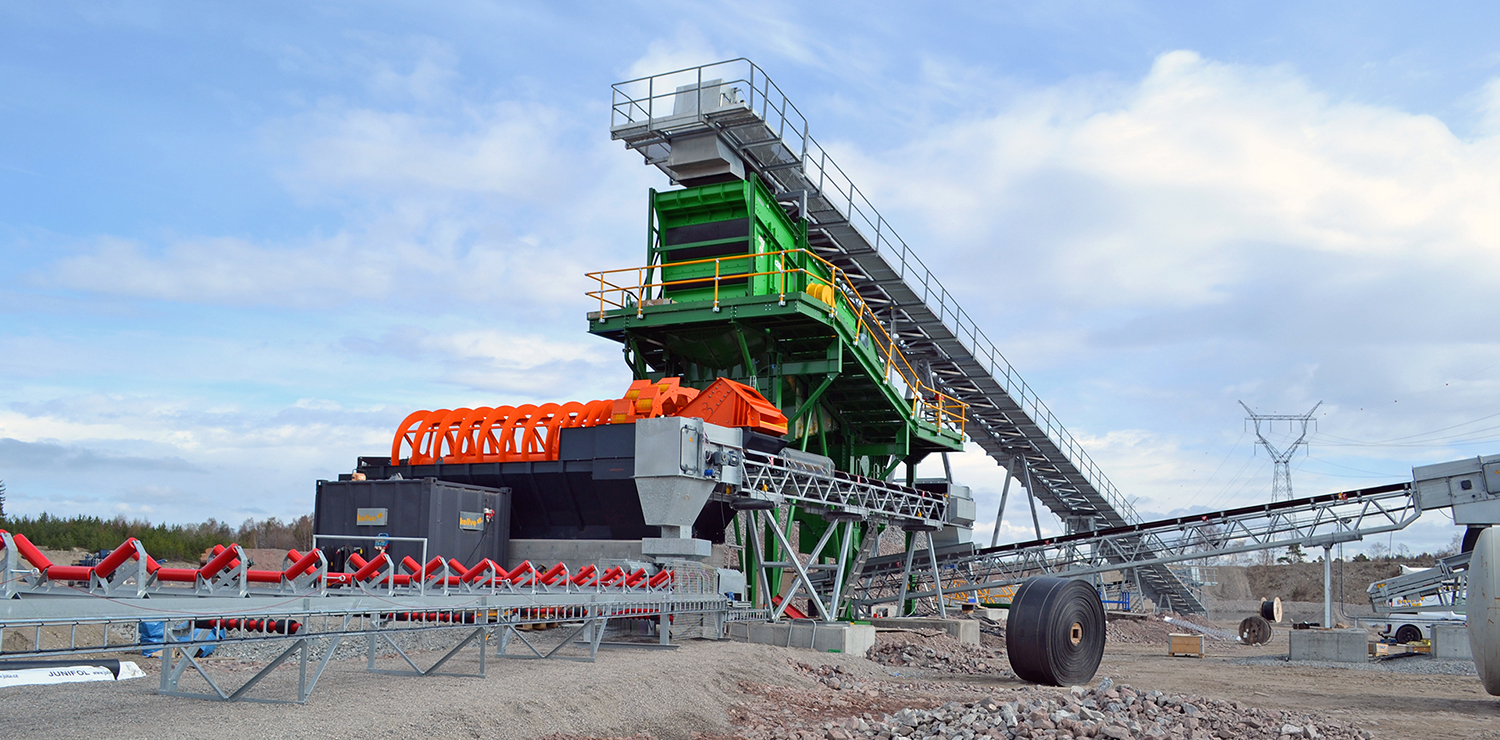A million tonne contribution to biodiversity
When you build an 18-kilometer-long tunnel, you end up with several million tonnes of blasted rock that must be taken care of,” says Karin Nilsson, Environmental and Permit Specialist at Jehander. “The explosives contain nitrogen, which contaminates the rock. Jehander cleans theblasted rock, and the nitrogen rich wastewater from the cleaning process flows to three constructed wetlands. There the nitrogen is reduced in a natural and environmentally friendly way.
Creating wetlands
Nitrogen is a nutrient. But too much nitrogen in the Baltic Sea can result in eutrophication and algal blooms. “We avoid releasing an excess of nutrients into the environment with the help of wetlands,” continues Karin Nilsson. “In the wetlands, the water will circulate for about two years so that the plants there can absorb the waterborne nitrogen and bacteria can convert it into nitrogen gas.”

Wetlands offer an environmentally friendly and natural purification method that both absorbs nitrogen and, at the same time, contributes to increasing biodiversity.
“With this method, we support the survival of wetlands, which are progressively disappearing as a result of human activity such as farming,” says Karin Nilsson.
Six-hectare area of wetland
According to the Swedish Environmental Protection Agency, up to a quarter of Sweden's original wetlands have already disappeared. This also means that many species have lost their habitats. Jehander is creating a six-hectare area of wetland divided into three small lakes. There, various plants will thrive, such as yellow lilies, reeds, water lilies and bulrush. The water is also important for birds, amphibians, lizards and other reptiles, especially when the wetland is surrounded by a large area of agricultural land.
“Wetlands are a natural system,” continues Karin Nilsson. “So, it takes time for plants to establish themselves and begin to flourish. We will therefore follow up regularly to ensure that the nitrogen content reaches the desired levels. We may need to add more plants and create additional environments for the bacteria that are present. It is a continuous process.”
In a natural wetland, the plants that thrive have had a long time to establish themselves. “A constructed wetland starts at square one. It can take up to five years before it has the plants it needs,” explains Karin Nilsson. “First, we let the plants establish themselves. Then come the plants that thrive there naturally. After a while, it may be necessary to add plants that have ahigh nitrogen uptake.”
Ecology and economy
Jehander operates a large quarry in Löten with a harbour to supply aggregates to the concrete industry in Stockholm. The quarry has all the necessary infrastructure for receiving the blasted rock from the Stockholm Bypass project. One shipload corresponds to 40 truckloads, which significantly reduces the truck traffic in the Stockholm area. From an environmental point of view, the sea route is the best transport alternative.

A total amount of 4.5 million tonnes of blasted rock will be transported to Löten during the construction of the Stockholm Bypass. The cleaned blasted rock is recycled, transported environmentally friendly by ship and uses wetlands as a purification method: all this creates a sustainable value chain and at the same time boosts biodiversity and increases business value.



